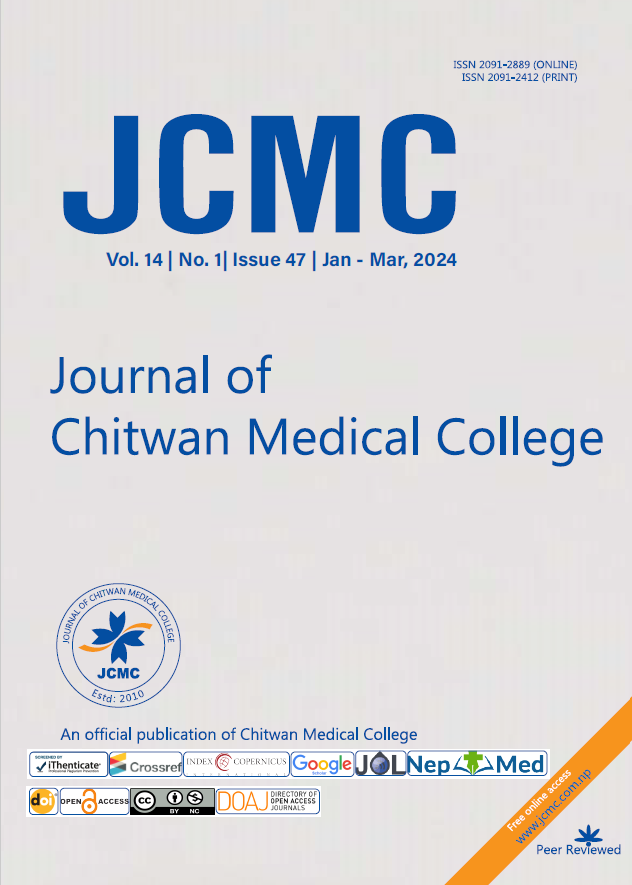FREQUENCY OF SECOND MESIOBUCCAL CANAL IN PERMANENT MAXILLARY SECOND MOLARS AT A TERTIARY CARE CENTRE OF NEPAL
DOI:
https://doi.org/10.54530/jcmc.1473Keywords:
MB2, Magnification, Maxillary Second Molar, UltrasonicAbstract
Background: The success of endodontic treatment relies on the precise identification of root canals followed by cleaning, shaping, and obturating the canals. Mesiobuccal root of maxillary second molar teeth present wide variations with regard to the number and type of root canals. The complexity of the root canal varies widely in different ethnic groups. The study aimed to determine the prevalence of second mesiobuccal canal (MB2 canal) in maxillary second molar.
Methods: A descriptive cross-sectional study was conducted at Department of Conservative Dentistry and Endodontics, Universal College of Medical Sciences, Bhairahawa. A total of 100 permanent maxillary second molar undergoing endodontic treatments were studied. After access cavity preparation ultrasonic tips and magnification loupes were used to open the subpulpal groove in a direction from first mesiobuccal (MB1) canal towards the palatal canal to locate the second mesiobuccal (MB2) canal. Radiovisiography (RVG) was taken to confirm the presence of MB2 canals.
Results: MB2 canals were detected in 52 teeth out of 100 teeth that were studied. It was found that the younger adult (18-35 years) tends to have a higher proportion of MB2 canals (65.6%) as compared to the middle-aged elderly (36-55years) in whom it could be identified only 33.4% of the time.
Conclusions: Based on this study, it can be concluded that the prevalence of MB2 canal in mesiobuccal root of the permanent maxillary second molar is high.
Downloads
Published
Issue
Section
License
Copyright (c) 2024 Sageer Ahmed, Snigdha Shubham, Kriti Shrestha, Vanita Gautam, Govind Kumar Chaudhary

This work is licensed under a Creative Commons Attribution-NonCommercial 4.0 International License.



